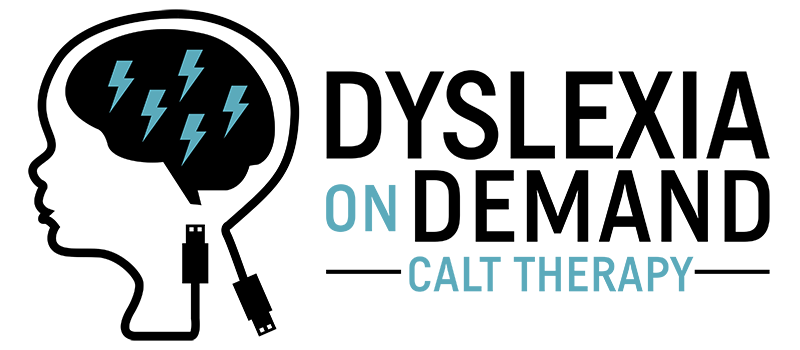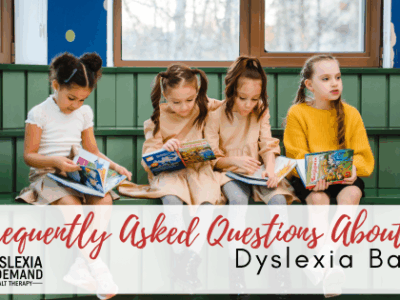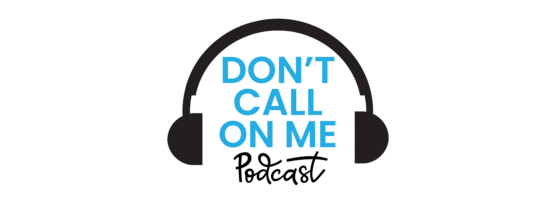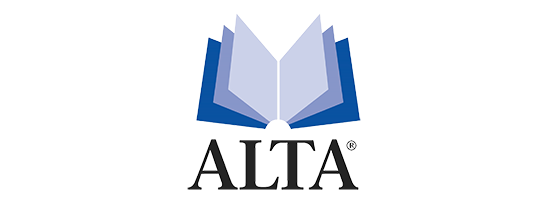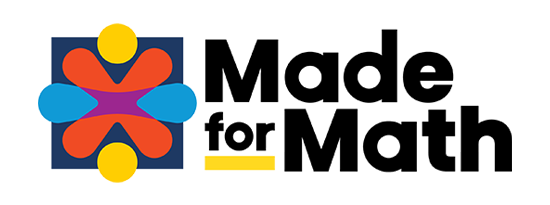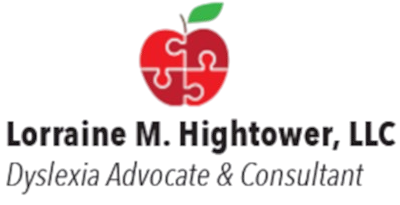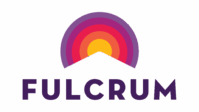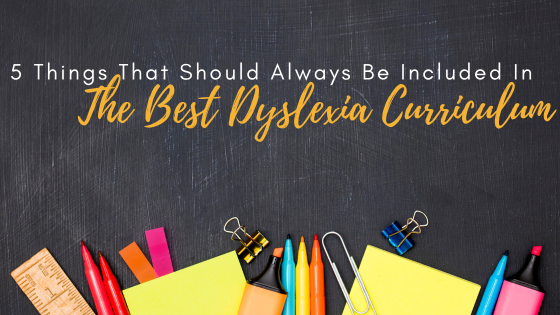
5 Things That Should Always Be Included In The Best Dyslexia Curriculum
When they’re little, you may read books with your children like “Where the Wild Things Are” or “The Book with No Pictures.” As they grow, they may dive into classics like “Charlotte’s Web” on their own. Later, young readers may choose their own reading adventures with chapter books such as “Wonder,” “Stargirl,” or the Harry Potter series. It’s so important for readers to choose books that they can engage with and enjoy, but when students struggle with a learning disability like dyslexia, the path to reading changes a bit. Fortunately, there are some empowering solutions available for students with dyslexia. Dyslexia therapy is one way to help improve reading skills, fluency, and confidence. As a parent, you will want to support your student at home, advocate for your student in his or her classroom, and even seek extra help from dyslexia experts. When you’re deciding on the best outside help for dyslexia, it’s crucial to find the right approach for your student. Read on to learn 5 things that should always be included in the best dyslexia curriculum.
- Explicit teaching, phonological awareness, and phonics lay the groundwork. For students with dyslexia, their learning disability often emerges in difficulty understanding how sounds connect to letters and words. In a successful dyslexia curriculum, an instructor helps readers to learn phonemic awareness; this can involve identifying and manipulating the individual sounds in words. Phonemic awareness is foundational, as it helps readers to build upon skills and to learn to decode words accurately and fluently.
- Multisensory instruction is key. For learners with dyslexia, simply sitting and reading from a book is not the right approach. Engaging a student’s different senses during learning can be so beneficial. Multisensory instruction focuses on incorporating auditory activities, visual exercises, and even some kinesthetic movements to help reinforce new concepts. Some examples of multisensory exercises can include things like tracing letters in the air or in sand, using hand gestures to associate with sounds, or implementing the use of manipulatives like letter tiles.
- Systematic and structured language instruction makes for a most successful curriculum. The more order and structure there is in a learning plan, the better it is for students with dyslexia. This kind of approach to language learning works in that it breaks down complex concepts into smaller, more manageable steps for students. Practicing consistently is also a part of this structure. Orton-Gillingham based programs tend to provide this kind of structured framework that features explicit instruction in areas like syntax and vocabulary. Frequent repetition, both of new concepts and those that have been conquered, helps to foster new neural connections and pathways that lead to on-going success.
- Results should drive progress. Ideally, a student with dyslexia will start a dyslexia curriculum with a comprehensive evaluation, academic skills assessments, and a baseline evaluation of where the student is starting. From there, diagnostic and prescriptive interventions can be implemented to help develop skills such as accuracy and fluency. Instructors should work with dyslexia students to create foundations in oral and written language. With this kind of measured progress, skills like comprehension, spelling, and written expression can improve. This measured progress creates a continual feedback loop that is driven by the data of student success.
- Curriculum should be implemented by experts. There are different options for a dyslexia curriculum available, but it’s so important that an educated, experienced professional implements the lessons. At Dyslexia on Demand, Certified Academic Language Therapists—or CALTs—provide expert, skilled one-on-one or small group interventions. The lessons from an Orton-Gillingham based curriculum are taught with high frequency over a sustained period of time. This kind of instruction focuses on explicit understanding, repeated practice, and performance, which can help lead students to develop more accuracy, fluency, and comprehension. CALTs integrate visual, auditory, and motor processing into their sessions as well. If you’re looking for help for your student with dyslexia, know that it is crucial to collaborate with experienced professionals in a program that offers comprehensive support. This can empower learners to reach their full potential.
Learn more about Take Flight Therapy. At Dyslexia on Demand, our Take Flight program focuses on effective components of effective reading instruction including vocabulary, phonemic awareness, fluency, and reading comprehension. Through Take Flight, students work to expand and enrich their vocabulary by both direct instruction and through the context of reading. Take Flight therapy works on a systematic exploration of the articulation of phonemes and the application of newly learned phonics skills. The guided and repeated reading of decodable words, phrases, and texts help students to develop better fluency, and a combination of techniques work to improve reading comprehension.
Is your child experiencing learning struggles? Dyslexia on Demand can help. Reach out to us so we can help you learn some of the differences between dyslexia tutoring and dyslexia therapy. It is our mission to make dyslexia therapy accessible to students who need it; our online programs can help change lives! Give us a call at 888-292-3906 to learn more.
